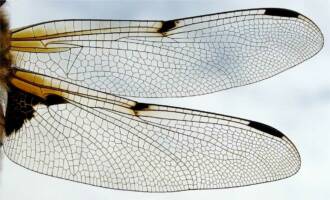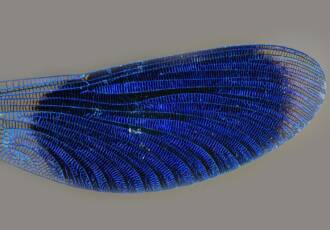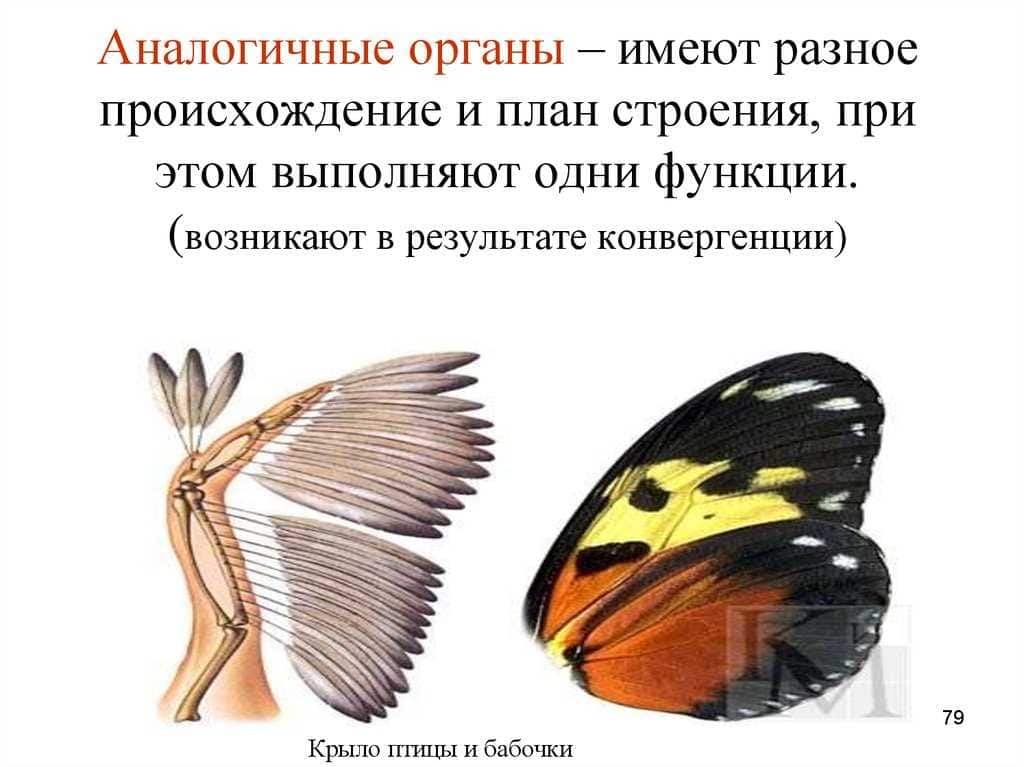
Nature is full of amazing phenomena, and one of them is the evolution of defense mechanisms in various animal species. Especially notable are butterflies, which have a variety of ways to protect themselves from predators. One such defense mechanism is the eyes on the wings of some species of butterflies.
Eyespots on the wings of butterflies are round spots that have the shape of eyes. They can be of different sizes and colors, but they always attract attention. The main role of these eyespots is to distract predators from the vulnerable parts of the butterfly's body, such as the head and body. This allows them to survive and continue to reproduce.
However, the eyes on the wings of butterflies not only perform a protective function, but also play an important role in attracting males. In many species of butterflies, males have developed vision and are able to distinguish colors and shapes. Protective eyes on the wings are a kind of advertising that attracts the attention of males and arouses their interest. Thanks to this, males find their partners and start breeding, which is important for the conservation of species diversity.
Thus, protective eyes on butterfly wings are an example of an evolutionary adaptation that not only provides protection from predators, but also serves as a means of attracting males. This is a clear example of how nature finds different ways to survive and reproduce, which makes it amazing and unique.
The evolution of nature art
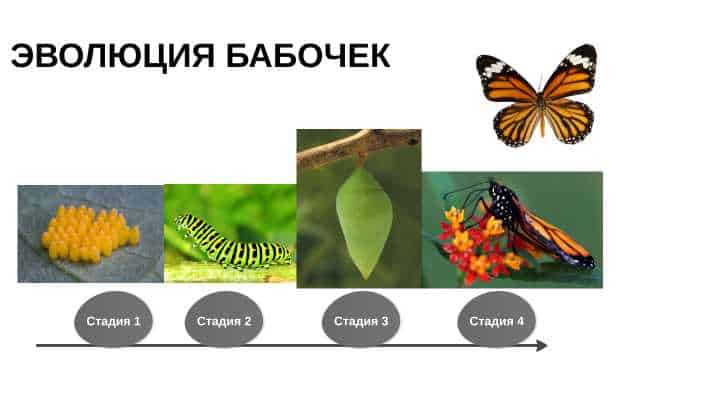
Nature is a real artist, creating works of art that never cease to amaze us with their beauty and perfection. One of the most striking examples of this art is the protective eyes on the wings of butterflies.
Eye spots on the wings of butterflies are small round spots that resemble eyes. They can be of various shapes, colors, and sizes. Their main role is to attract males and protect against predators.
These eyes are the result of millions of years of evolution. They effectively attract the attention of males and serve as an indicator of good health and reproductive ability. Butterflies with bright and expressive eyes are more likely to find a partner and pass on their genes to the next generation.
In addition, protective eyes are an illusion for predators. They give the impression that the butterfly is watching its pursuer, and this can divert its attention from the main body of the butterfly, where the vulnerable part is located.
The evolution of nature art continues steadily and we can only marvel and marvel at how nature creates such amazing and beautiful works of art.
Protective eyes on butterfly wings
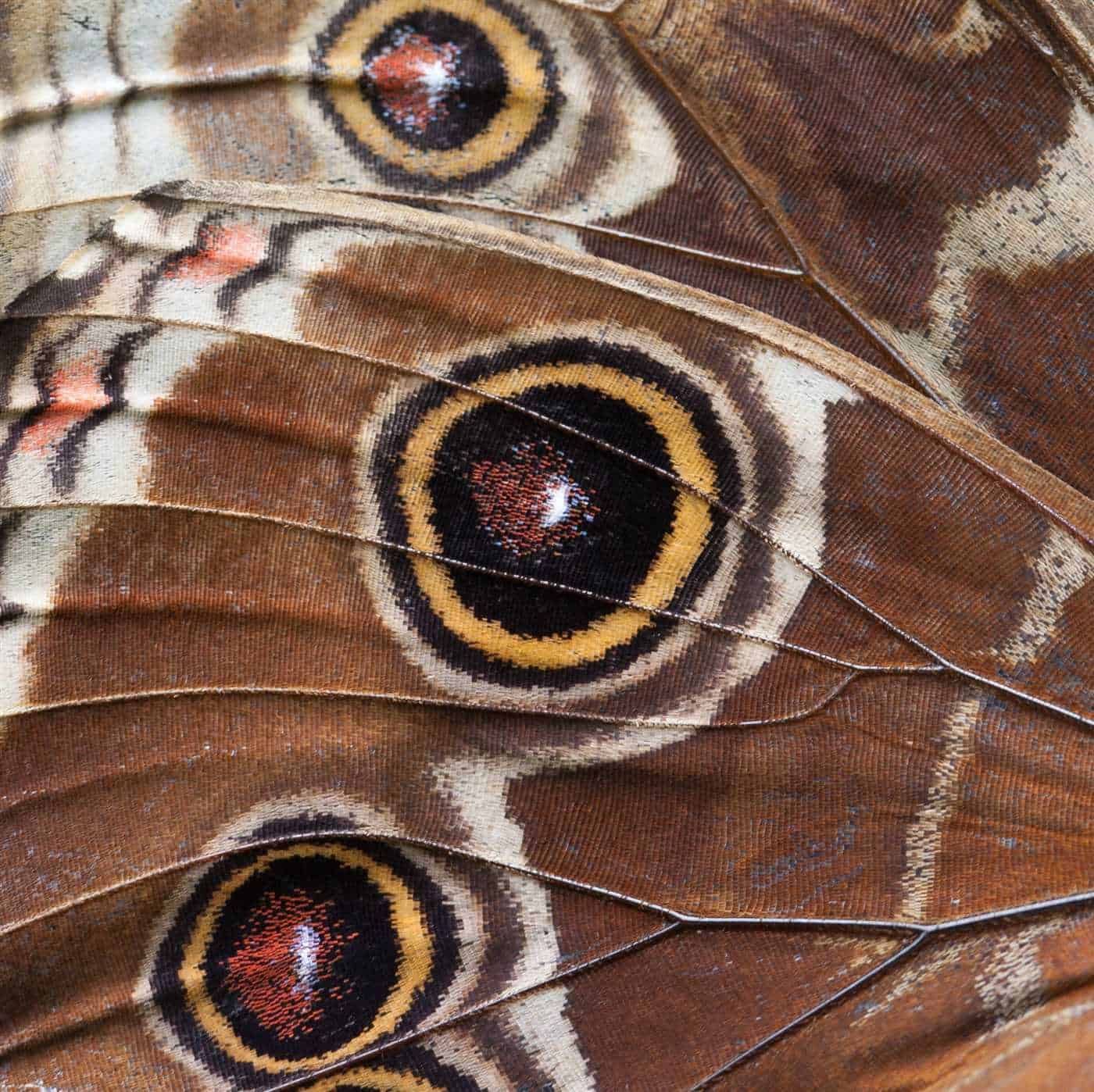
The protective eyes on butterfly wings are one of the most exciting features of these beautiful insects. They are bright rounded spots that resemble eyes. These eyes can be of different shapes, sizes and colors, and they are located on different parts of the wings.
Protective eyes play an important role in the life of butterflies, especially in attracting males. They serve as signals to males, indicating that the female is ready to breed. The color and brightness of the eyes play an important role in this process.
The eyes on the wings of butterflies also serve as protection. They can confuse and distract predators by mimicking the eyes of larger, more dangerous creatures. This allows the butterfly to escape from danger and save its life.
In addition, protective eyes can be used for camouflage. They can help the butterfly blend in with its surroundings or make it less visible to predators. This is especially important for the survival of butterflies in the wild.
The role of peepholes in attracting males

Butterfly wing eyes are a great example of evolutionary adaptation that plays an important role in attracting males. They are round, bright spots that are shaped like eyes.
The eyes on the wings of butterflies serve as signals to males, indicating to them the direction and location of the female. These bright and attractive spots attract the attention of males and help them to easily spot their mates. Due to this, the reproduction process becomes more efficient for both sexes.
The ocelli on the wings of butterflies can also serve as a defense against predators. They create the illusion of large eyes, which makes the butterfly more intimidating and dangerous in the eyes of predators. This causes them to retreat and not attack the butterfly.
It is interesting to note that the eyes on the wings of butterflies can have different shapes and colors depending on the species. This indicates that these traits evolved and changed over a long period of time in order to be most effective in attracting males and scaring off predators.
In general, the ocelli on the wings of butterflies play an important role in attracting males and protecting them from predators. They exemplify the superior evolutionary adaptation and beauty of nature.
Eye formation mechanisms
The formation of protective eyes on the wings of butterflies is the result of an evolutionary process that ensures the survival and reproduction of these insects.
One of the mechanisms for the formation of the eye is associated with the structure of the wings of butterflies. They consist of the smallest scales, which can have different colors and shades. The eyes are formed due to the special distribution and coloration of these scales on the wings.
Another mechanism involves an optical effect called “mimicry.” Butterflies with eyespots on their wings can mimic the appearance of the eyes of animals such as birds or lizards. This allows the butterflies to distract predators and increase their chances of survival.
Also, the eyes on the wings of butterflies can serve as a signal to attract males. They can be bright and eye-catching, which helps females attract attention and choose the right breeding partner.
In general, the mechanisms for the formation of eyes on butterfly wings are the result of evolutionary selection and adaptation to the environment. They provide butterflies with protection from predators and aid in reproduction, which allows them to successfully survive and maintain their species.
The biological nature of the peephole

Eyespots on the wings of butterflies are a biological feature that plays an important role in their survival and reproduction. They are bright, round spots that resemble eyes. These eyespots have a special structure that makes them very noticeable and attractive to potential partners.
The main function of the peephole is to protect butterflies from predators. Their brightness and unusual shape divert the attention of predators from vulnerable parts of the body of butterflies, such as the head or thin wings. Instead of attacking these vulnerabilities, predators turn their attention to the eyes, which allows the butterflies to escape from danger and save their lives.
However, the eyes on butterfly wings are not only for protection. They also play an important role in attracting males. Bright and noticeable eyes attract the attention of males, who use them to determine the sex and readiness for breeding. The eyes signal the health and genetic quality of the female, making them attractive to males. This phenomenon is known as sexual selection and is one of the key factors in the evolution of the ocelli on butterfly wings.
Genetic features of the peephole
The ocelli on butterfly wings are unique structures that play an important role in their attractiveness to males. The genetic characteristics of the eyes determine their shape, color and size, which makes each type of butterfly unique in its own way.
One of the genetic features of the eye is the presence of certain genes responsible for the development and formation of these structures. For example, the gene that controls eye color can vary between different species of butterflies, which affects their appearance and ability to attract the attention of males.
In addition, the genetic features of the eyes determine their location on the wings of butterflies. Some species have ocelli only on the upper side of the wings, while in others they may be on both the upper and lower sides of the wings. It also affects the ability of females to attract males and choose the right breeding partner.
Thus, the genetic features of the eyes on the wings of butterflies play an important role in the evolution and attractiveness of these insects. They are the result of complex genetic coding mechanisms that shape the unique external characteristics of each butterfly species.
Types of butterflies with eyes
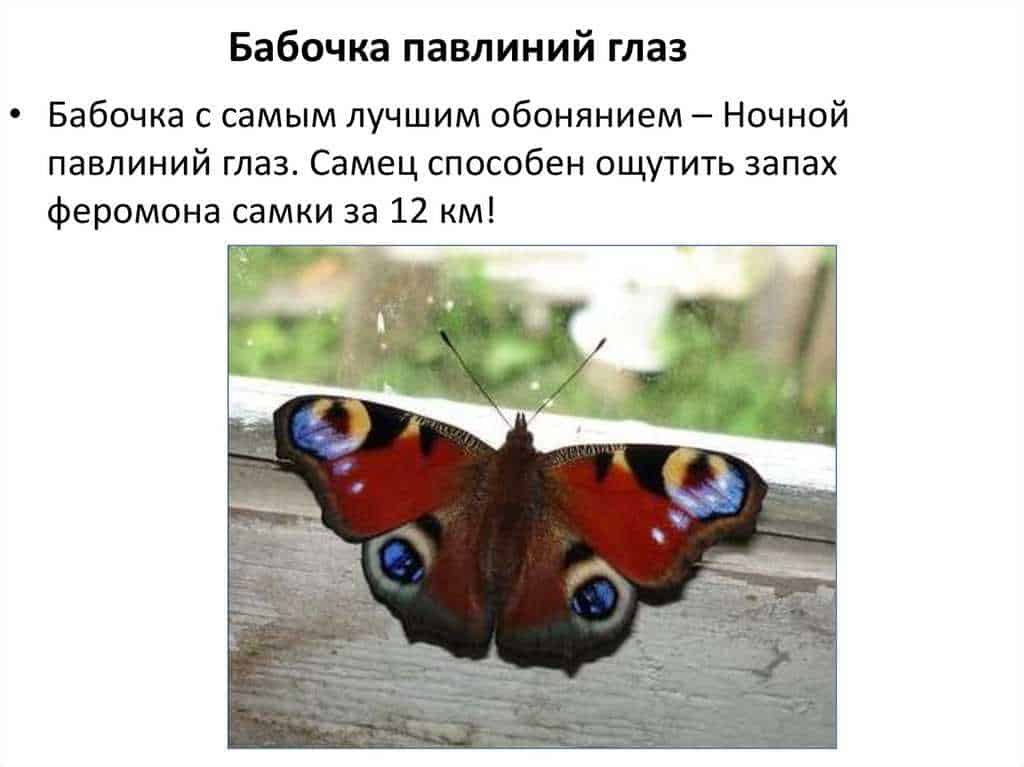
There are many types of butterflies in the world that have protective eyes on their wings. These eyes are one of the most striking and attractive elements of their appearance and play an important role in their evolution.
One of the best-known types of butterflies with eyes is the Atlas Butterfly (Attacus atlas). This species has large and bright eyes on the wings, which attract the attention of males while soaring. The eyes on the wings of the satin butterfly serve as a signal of readiness for breeding and help attract males for successful mating.
Another interesting butterfly species with eyes is the monarch (Danaus plexippus). In this species, the eyes are located on a black stripe that runs along the edge of the wing. This eye-stripe is a defense mechanism that draws the attention of predators away from the more vulnerable parts of the butterfly's body. The eyes on the monarch's wings create the illusion of a predator's eyes and cause it to retreat, allowing the butterfly to fly to safety.
Insects with eyes on their wings
Some insects, such as butterflies and moths, have a surprising feature - eyespots on their wings. These eyespots look like small round spots located on the insect's wings. They are bright and contrasting, which makes them noticeable to other animals.
The eyespots on insect wings have an important function - to attract the attention of males. These eyespots are one of the ways of communication between males and females. Males use the eyespots on their wings to determine the sex and readiness of the female to reproduce.
Eyes on the wings of insects also play a protective role. They are a kind of signal for potential predators, indicating that the insect is dangerous or unpleasantly tasty. This phenomenon is called mimicry and allows insects to avoid being attacked by predators.
Interestingly, the eyes on the wings of insects can mimic the eyes of large predators such as birds or lizards. This causes predators to beware and not approach the insect, thinking that they themselves can become prey.
Variety of eye shapes and colors
Butterfly wing eyes come in an amazing variety of shapes and colors. They can be round, oval, teardrop, triangular, and even complex and intertwined. This variety of shapes allows butterflies to make the most of their eyes to attract males and protect themselves from predators.
In addition to the shape, the eyes also differ in a variety of colors. They can be bright and contrasting to attract the attention of males, or camouflage to blend in with the environment and evade enemies.
The color scheme of the peephole can also be very diverse. They can be solid or have transitions from one color to another. Some eyes may have bright stripes or spots that attract the attention of males and help them determine the sex and mating readiness of females.
The evolutionary benefits of the peephole
The ocelli on butterfly wings are a remarkable example of an evolutionary adaptive mechanism. They perform several important functions, providing advantages in reproduction and survival.
Protection from predators
The ocelli on the wings of butterflies serve as an important defensive mimicry. Their bright color and pronounced shape resemble the eyes of large birds of prey or other dangerous animals. This allows the butterflies to intimidate predators, making them less likely to attack. Such a defensive strategy allows increasing the chances of survival and reproduction for individuals with eyes.
Attracting partners
The ocelli on butterfly wings also play an important role in attracting mates. Due to their bright color and pronounced shape, the eyes attract the attention of males and help them determine that they are facing a female of their own species. This increases the chances of successful breeding, as males will prefer females with brighter and more expressive eyes.
In general, the eyes on the wings of butterflies represent an evolutionary example of effective adaptation. They provide protection from predators and help attract breeding partners, which contribute to the survival and success of the species. These advantages allow butterflies to effectively adapt to their environment and continue their development.



